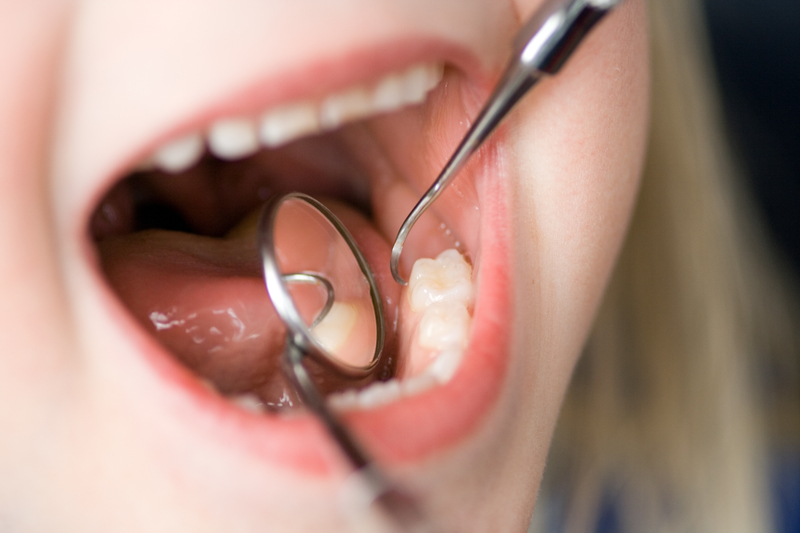Combatting Child Gingivitis
How Early Can Kids Take Care of Their Oral Health?
April 6, 2018Preparing Children for Dental and Orthodontic Work
April 18, 2018
Gum disease is an oral health condition that already affects more than 64 million adults in the United States alone. However, this condition can also happen to children and generally starts out as gingivitis. This is an early stage of the disease that comes when brushing and flossing isn’t done properly or isn’t happening enough. We can help you know how to help your child avoid problems with child gingivitis and how to teach them to properly take care of their mouth!
Gum Disease: A Silent Killer
The Centers for Disease Control reports that half of all American adults have gum disease. This equals about 64.7 million American adults. Tooth decay—or cavities—happen from plaque. Plaque is made when sugars in your food and drink mix with bacteria in the mouth to form a sticky, acidic substance. That substance (plaque) sticks to the teeth and erodes your tooth enamel away over time. You have to physically brush and floss the plaque away to avoid this erosion and eventual decay.
Your teeth are the hardest substance in your body and yet they are damaged by plaque. That spells disaster for your gums, which are soft and easily irritated. Plaque sits on your gumline and irritates the gums. This causes them to become red, swollen, and irritated and eventually the gums will recede and teeth will begin to fall out. This entire process is known as gum disease, and it is largely painless until the later stages.

Early Stages: Child Gingivitis
The mild, or early, stage of gum disease is known as “gingivitis”. This is the stage where your gums become red, swollen and they bleed, especially when flossing. Usually, patients aren’t flossing often, so when they do, their gums bleed a lot. If you have gum disease, the gingivitis stage is the easiest one to treat—even though it takes time. Gingivitis largely happens to adults, especially because they have the adult, permanent teeth for many decades. Children only have their baby teeth for a few years, so tooth decay and child gingivitis only go so far during those years. However, studies show that child gingivitis is present in some form in the majority of children.
This child gingivitis is generally mild, but can become severe without help. A visit to the dentist can show children proper brushing and flossing techniques. Hormonal changes, medications, chronic childhood conditions, teeth grinding, child diabetes, nutrient deficiencies and more can cause child gingivitis. We can help you to know if the problem stems from poor oral hygiene or a medical problem. Don’t ever ignore signs of child gingivitis in your little one, as this could lead to alveolar bone loss or chronic conditions in the mouth.
What Can You Do As a Parent?
You get gingivitis—or the start of gum disease due to a lack of proper oral hygiene. Children get it because they don’t know what they are doing or a parent isn’t brushing or flossing their child’s teeth enough. This isn’t necessarily a child or parent’s fault. Learning to brush and floss the teeth properly take time. Children who brush and floss on their own may not know that the recommendation is to brush for 2 minutes at least morning and night. Teach your child to brush with toothpaste for 2 minutes, brushing each tooth in all different directions.
After brushing, make sure your child follows up with flossing. When children first learn to floss, you may need to have them use flossers, which are hand-held flossing devices. Children benefit from flossing even more if they scrape the teeth with the floss as they go. Make sure they are also getting well up into their gumline as they floss. Help your child to see plaque on their teeth by pointing out what it looks like before they brush and floss. Explain what plaque is and how it causes tooth decay and gum problems. Scrape some off if you need to show them better.
Then, after brushing and flossing, see if there is still plaque on the teeth. There are child gingivitis detectors in the form of chewable tablets. These tablets will turn plaque red and will help you and your child see if they are brushing and flossing well enough. Areas that they miss will be red, and will help them learn where to brush better.

Dental Visits Starting Early
As soon as your little one has their first tooth pop through their gums, it’s time to start seeing the dentist. The ADA recommends that every person visit the dentist at least twice a year, if not more often. If one of your kids has child gingivitis, they may need to be seeing the dentist more than that. Why? Your child will eventually have their baby teeth fall out, but they will have them for years of their life. If they decay the first year or gum problems run rampant, what are they supposed to do then? Small dental problems because severe dental problems that can affect development and a child’s health. Gingivitis that turns into severe gum disease in adults can seriously damage a person’s health and child gingivitis is no different.
Dental visits are a time where Dr. Hardy can examine your child’s teeth and gums and provide them treatments to help with tooth decay and child gingivitis. If caught early, we can help clear problems up so your child’s gums don’t bleed, swell or hurt. If you’ve noticed problems with your child’s gums, call Hardy Pediatric Dentistry & Orthodontics today at (720) 887-6003!